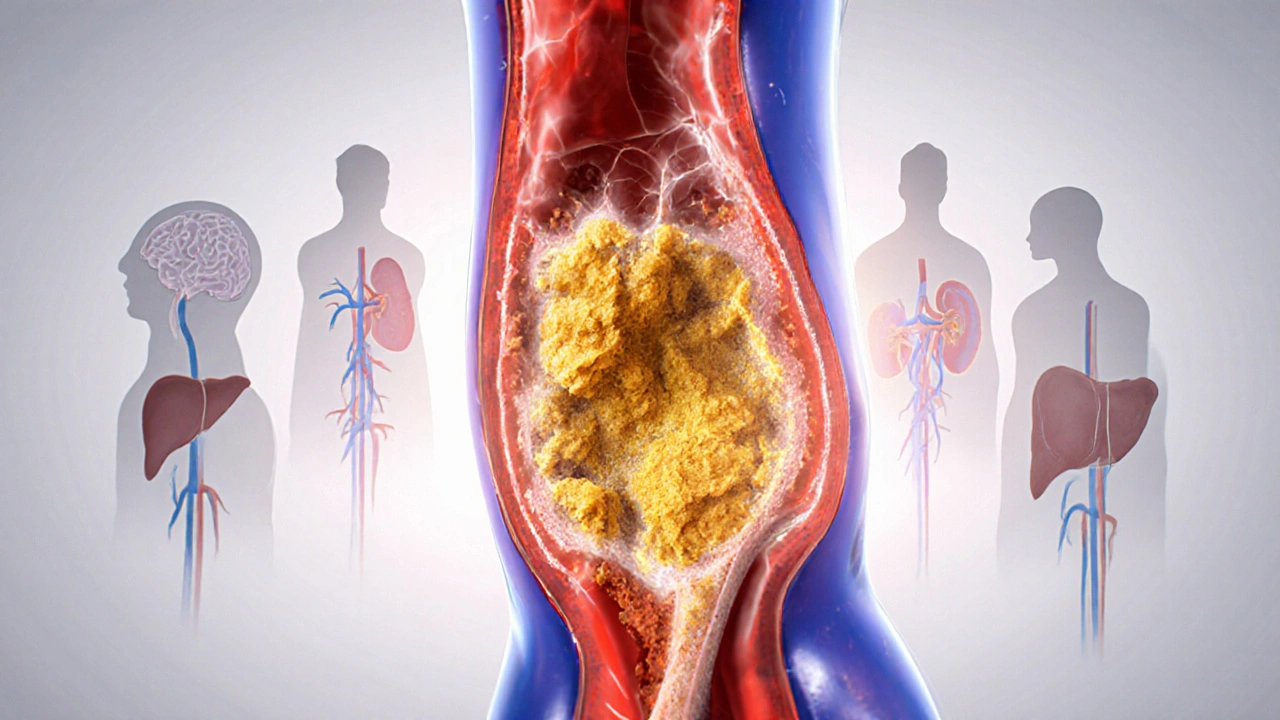HDL – The Good Cholesterol You Need to Know
When working with HDL, the “good” cholesterol that helps clear excess fats from your arteries. Also known as high‑density lipoprotein, it plays a key role in keeping blood vessels flexible. It works together with cholesterol, a fatty molecule that travels through your bloodstream and its counterpart LDL, the “bad” cholesterol that can deposit in artery walls. Low levels of HDL raise the risk of heart disease, any condition that narrows or blocks the heart's blood supply. In short, HDL transports cholesterol from tissues back to the liver for disposal – a classic example of a healthy lipid cycle.
Why HDL matters for your heart
Think of your circulatory system as a highway. HDL is the cleanup crew that picks up debris (cholesterol) and takes it to the recycling center (the liver). When the crew is strong, the road stays clear and traffic flows smoothly, reducing the chance of a blockage. Studies show that every 1 mg/dL increase in HDL can cut heart disease risk by about 2‑3 %. That’s why doctors often check HDL when they order a lipid panel – it gives a quick snapshot of how well your body is protecting your arteries.
Several lifestyle factors tip the balance between good and bad cholesterol. Regular aerobic exercise, especially brisk walking or cycling, nudges HDL up by 5‑10 %. Eating foods rich in monounsaturated fats, like olive oil or avocado, supplies the building blocks HDL needs. On the flip side, smoking and excess sugary drinks yank HDL down. Even a modest weight loss of 5‑10 % can boost HDL without any medication.
When you get a blood test, the lab usually reports HDL alongside LDL, total cholesterol, and triglycerides. For most adults, an HDL level above 60 mg/dL is considered protective, 40‑59 mg/dL is average, and below 40 mg/dL is a red flag. If you see a low number, don’t panic – it’s a cue to look at diet, activity, and possibly underlying conditions like diabetes or metabolic syndrome.
Raising HDL doesn’t require a miracle drug; everyday choices do the trick. Add a handful of nuts to your snack, use fish oil or fatty fish twice a week, and keep your waistline in check. Moderate alcohol, especially red wine, can give a short‑term lift, but it’s not a license to overindulge. If lifestyle changes aren’t enough, some doctors prescribe niacin or newer agents, but those are usually a last resort after counseling.
Low HDL often shows up with other warning signs: high triglycerides, small dense LDL particles, and higher blood pressure. This cluster points to insulin resistance, which means your body isn’t handling sugar well. Addressing the root – by cutting refined carbs, staying active, and managing stress – helps raise HDL while improving overall metabolic health.
Below you’ll find a hand‑picked set of articles that dive deeper into related health topics. From how anemia and nutrient gaps slow metabolism to ways HIV impacts sleep, each piece adds a layer of context that helps you see the full picture of cardiovascular and overall wellness. Keep reading to get practical tips you can apply right away.
Learn how high blood cholesterol harms the heart, brain, liver and more, and discover practical steps-diet, exercise, screening, and meds-to keep your levels in check.
